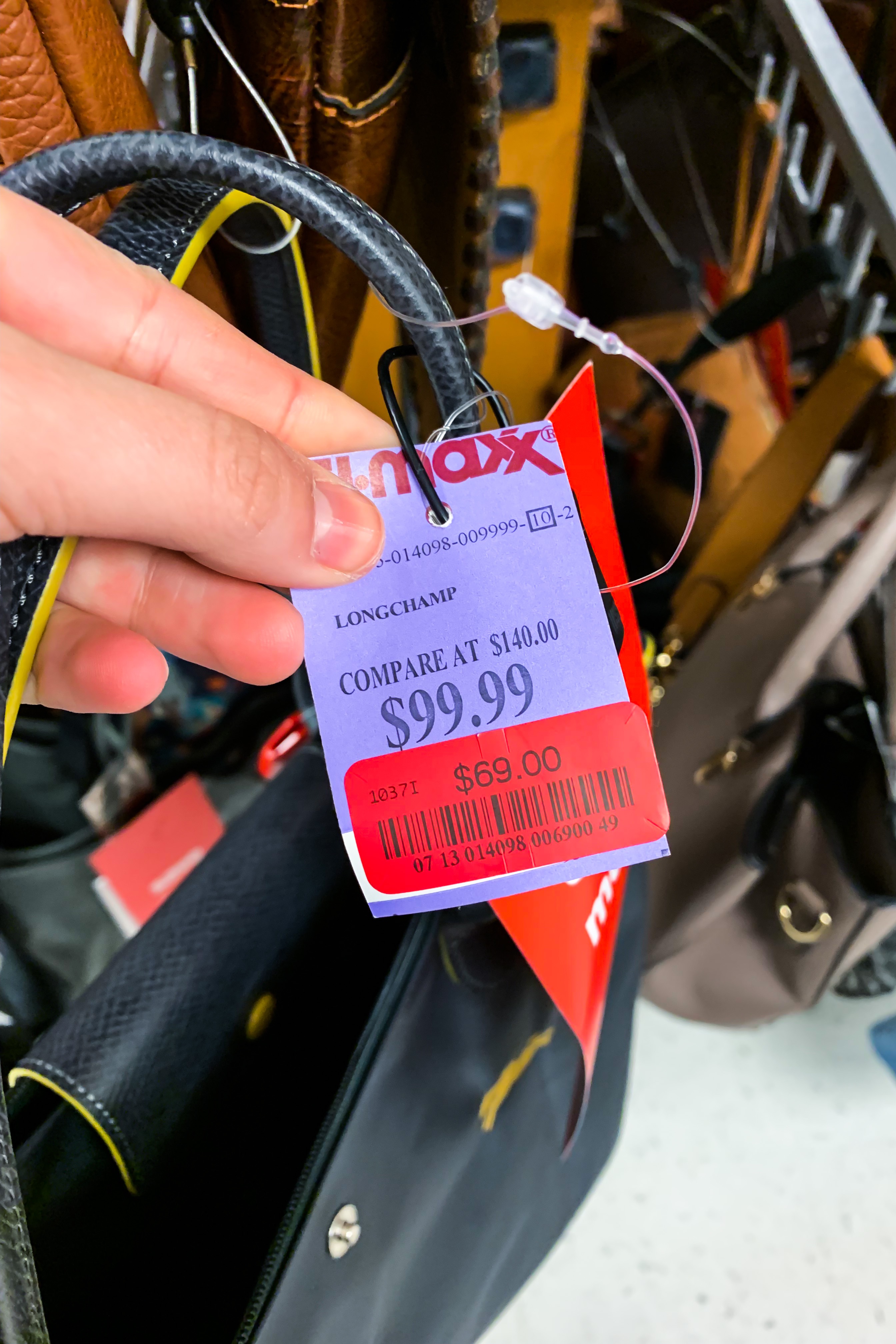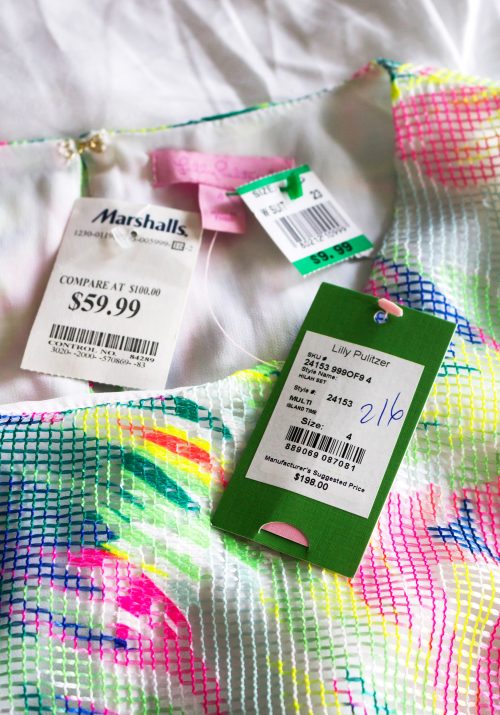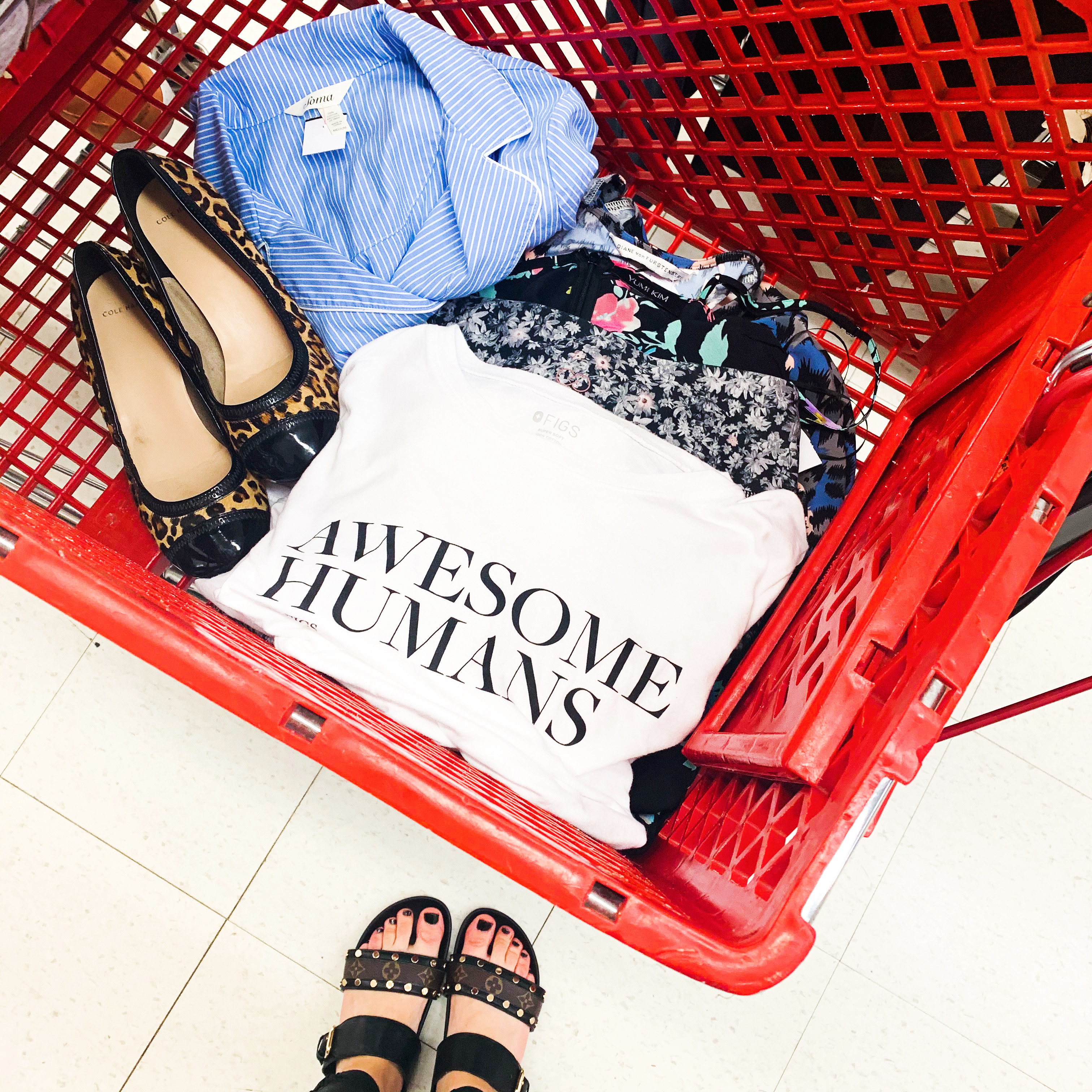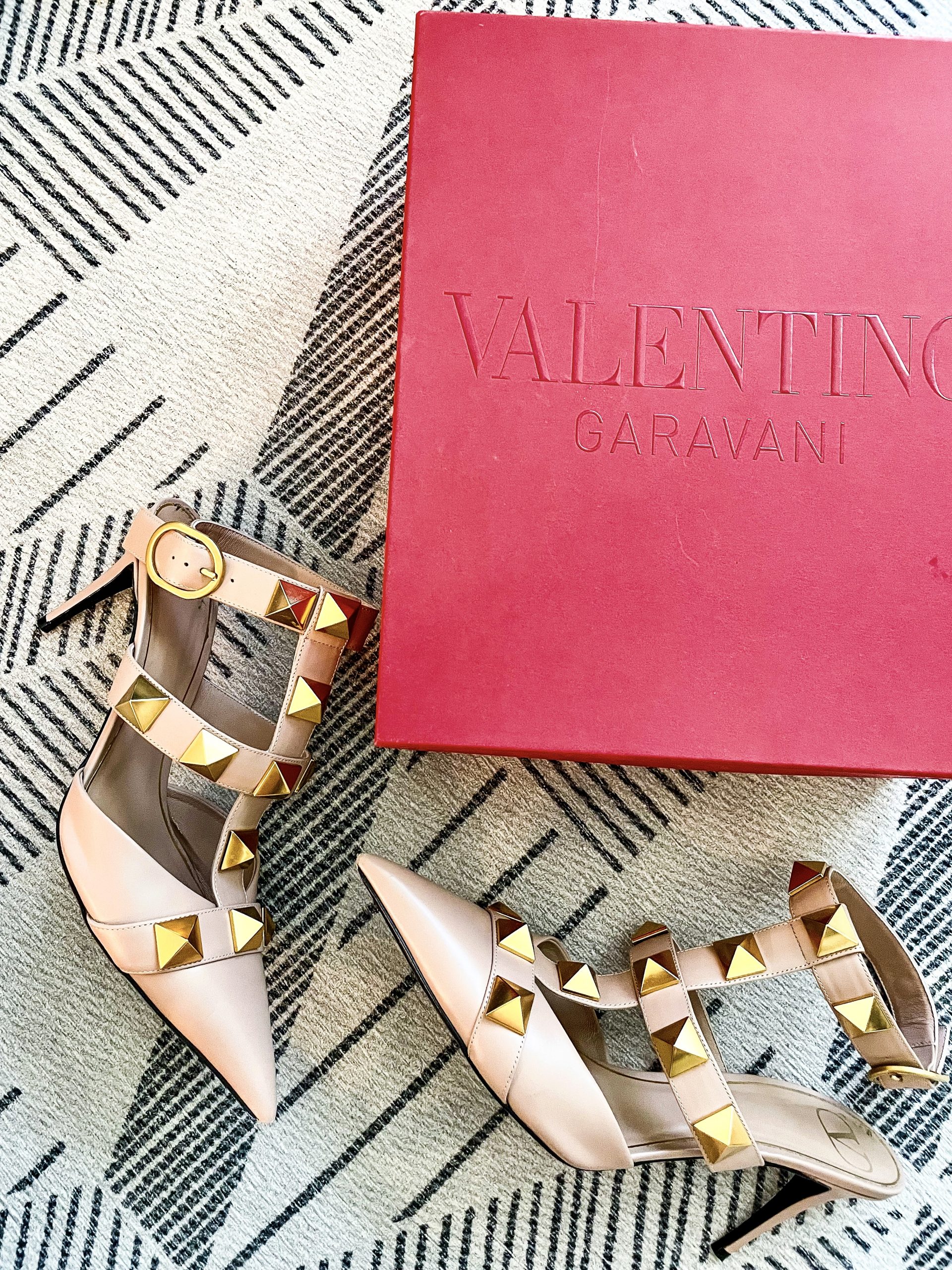
As a reseller, I am constantly looking for ways to grow and expand my business. One way that I have been able to do this over the years has been through sourcing and selling designer goods online. By incorporating designer items into my business model, I have been able to increase my profits and thus my overall income as a reseller. Today, I wanted to share with you some insight into how I source for designer items online as a full-time reseller.
1. Do Your Research
First and foremost, when it comes to selling designer items, it is imperative that I do my research. Specifically, I look for what designer items are trending and what designer items are timeless and classic. These are the items that I have found will have the best chance in selling on the secondhand market. In order to figure out what these items are, I look on various social media platforms, retail websites, and fashion sites. This can initially be time consuming but with time, it becomes a lot easier to spot and locate trending and classic items. Essentially, you are trying to establish that there is market demand for the items that you are looking to buy. Just because an item is designer does not mean that it is going to sell quickly or for a lot of money.
2. Set a Budget
When sourcing designer items, there is typically a higher cost of goods involved which leads to more risk. Personally, I would suggest sourcing one or two designer items to start. Once an items sells and you get a better understanding of what items work or don’t work for you, you can expand from there. I find it imperative for me to set a sourcing budget when I am sourcing designer goods as costs can quickly add up. As I purchase many of these items online, I try to offer the buyer as close to what they are asking for as possible. I do this to try to ensure that everyone is happy with the sale especially since I am going to turn around and resell the item myself.
3. How Many Items Do I Need to Buy?
Once I have done my research and set my budget, the next thing that I need to figure out is how many items do I need to buy. This number is going to be different for everyone and is largely going to be dependent on your budget and closet needs. Personally, I choose to have a mixture of items in my closet as that is what has worked best for me. That being said, when I go sourcing for designer items, I may only purchase 3-4 items at a time. If you are a more niche closet that sells mainly designer items, then your needs will be different than mine.
4. Desired Profit Margins
Before purchasing any designer items for resale, I need to run the numbers and make sure that the item that I am interested in purchasing will produce my desired profit margins. Depending on your business model, this number can be a set number (ex. minimum of $100) or a set percentage (ex. 300% of my cost of goods). Once you have determined what number is for you, it is a lot easier to determine whether or not a designer item is worth sourcing.
5. Deciding What to Source
The next step for me is deciding what items to source. Personally, I have found it best to focus on one or two categories. Usually, I will focus my attention on shoes and purses as those are the areas that I am the most knowledgable in and yield me the best return for my money. When it comes to designer goods, it is also important to note that many of these items are replicated and sold online. Since I enjoy selling designer items, I have taken the time to familiarize myself with authentic versus replica items so I can spot them while online sourcing. If you ever purchase an item and are unsure of its’ authenticity, there are paid services available that can help you determine an item’s authenticity.
6. Sourcing for Items Online
When sourcing designer items online, there are a few different places that I like to check out. A few of my favorites include: Poshmark, ThredUp, TheRealReal, and Mercari (to name a few). Of these platforms, I typically will source on Poshmark and The RealReal the most. On Poshmark, I will narrow my search results down to “Just In”, set my price range, and search for a specific brand. [Note: The Poshmark search function has changed recently so I may to need adjust other filters and search terms as well.]
Once I find an item that I am interested in, I will like the item and keep browsing. While I continue to search for other items, I will wait and see if the seller sends me an offer. If the buyer does send me an offer, I will then check comps and market demand to determine how well I predict that the item will perform. If the research and numbers support the purchase price, then I will accept the offer and purchase the item. If the buyer does not send an offer or the numbers do not justify the purchase, then I will still the like the item in case the buyer sends out any future offers.
Before making a purchase, I want to ensure that (1 ) the purchase price is fair for both buyer and seller, (2) there is market demand for the item, and (3) my projected desired profit margins are met. If all three criteria are met, then I am inclined to make the purchase.
An Example of a Designer Item that I Bought and Sold on Poshmark
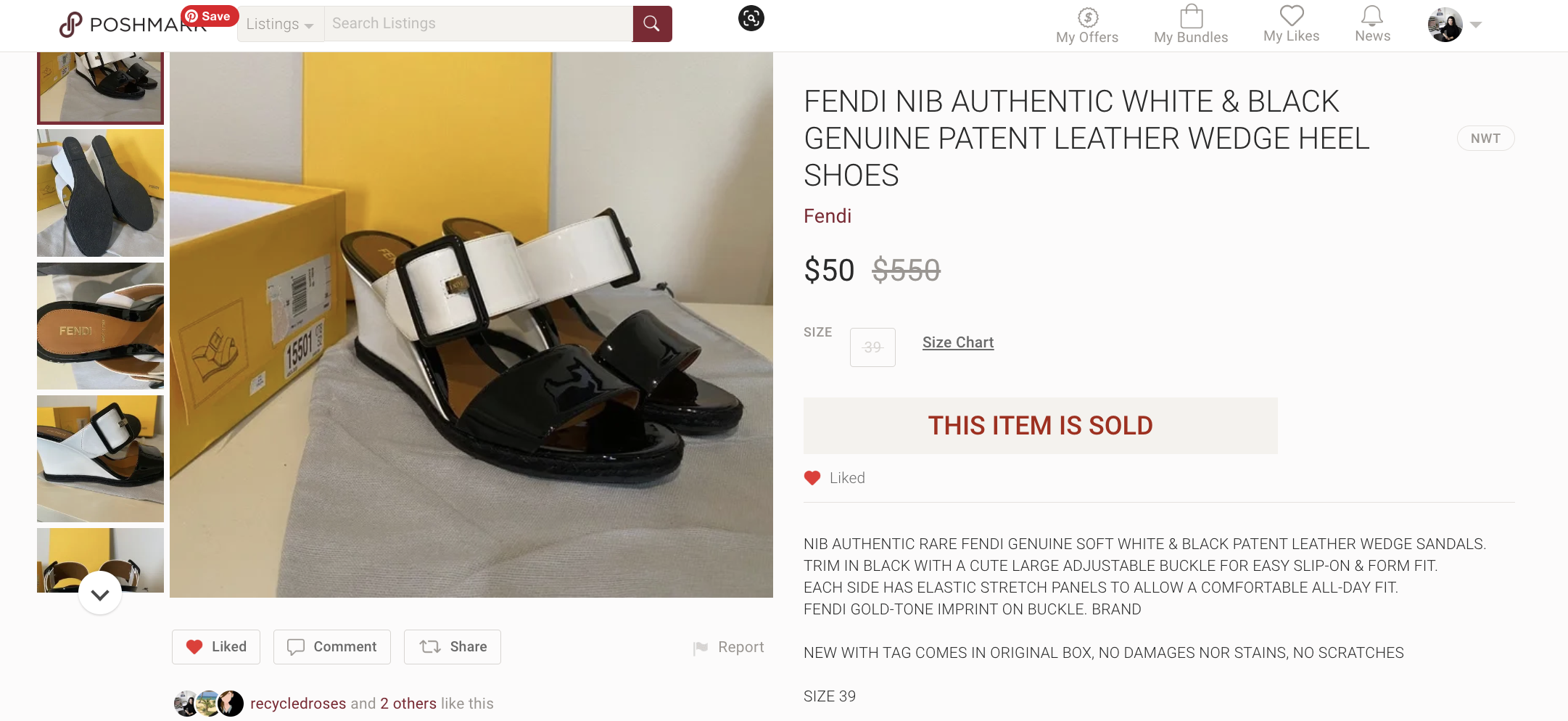
Above is a pair of new with box Fendi shoes that I bought on Poshmark earlier this year. When I stumbled upon these shoes, every box was checked off immediately for me: (1) They were brand new with the original box, (2) The price was great at $50, and (3) Profit Margin projections looked good.
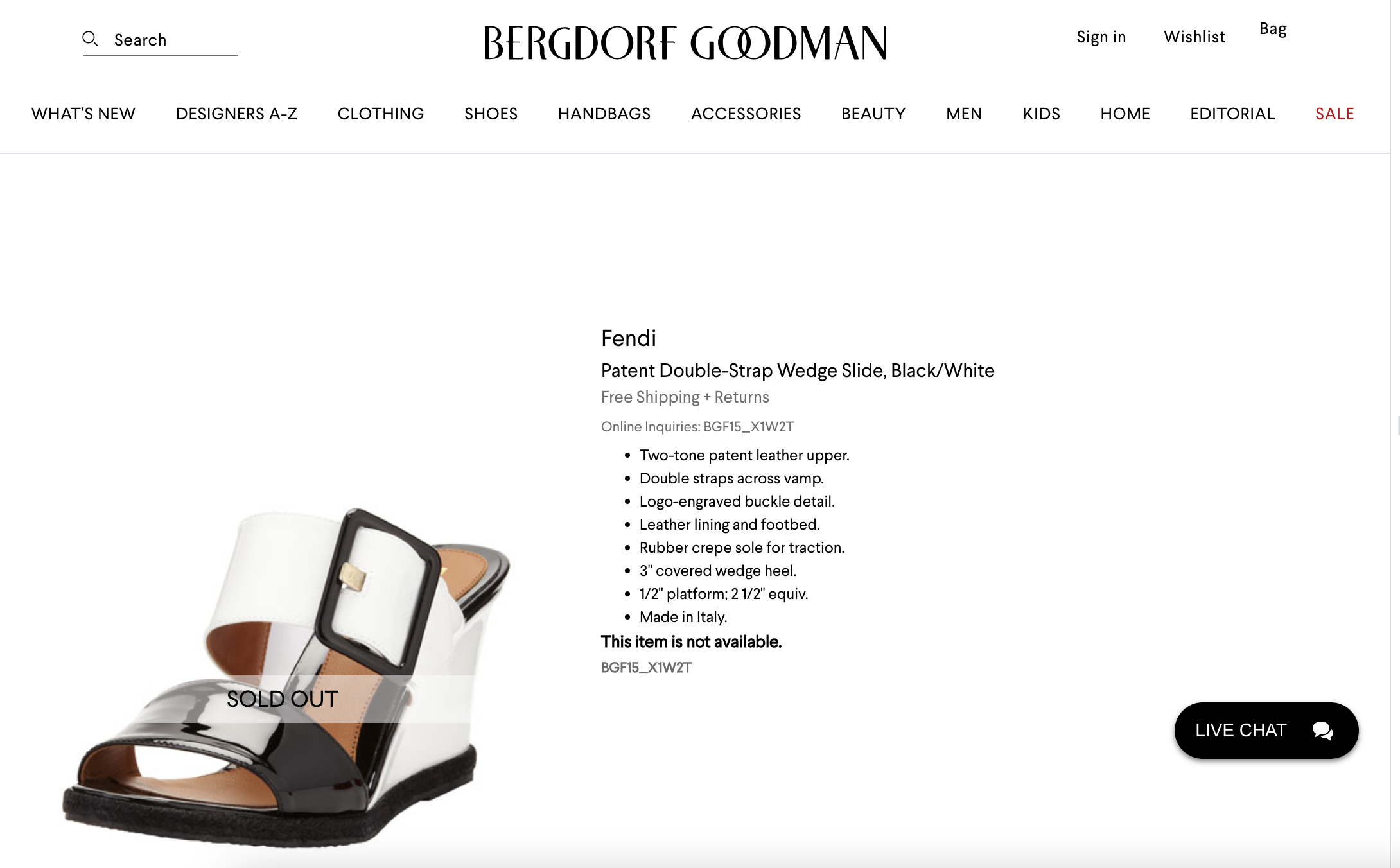
Once I found the shoes on Poshmark, I did a quick Google Lens image search to see if I could find the exact name of the shoes and determine their age. Luckily, the shoes pulled right up on the Bergdorf Goodman website and I was able to compare and contrast the shoes to determine authenticity. Additionally, I saved this image and information so I could potentially use it in my own listing.
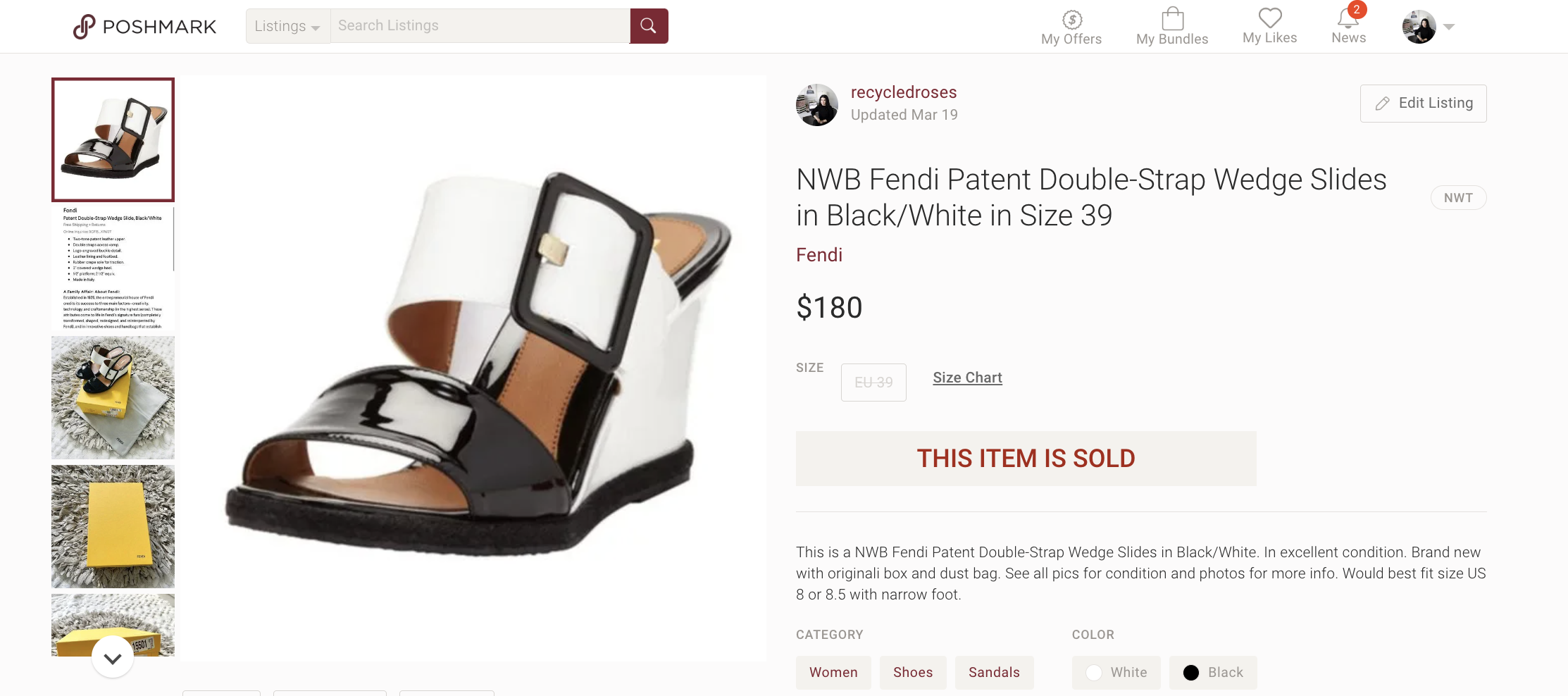
After purchasing the shoes, I immediately photographed and listed them for $200 and they sold within a few days for $180. This sales resulted in $94 profit and I almost doubled my money. Looking back on it, I probably could have sold these for more money but I am happy with the outcome of this sale.
I hope that you find this post helpful! If you have any questions or just want to chat, please reach out!
If you are interested in checking out other items that I have sourced this year, check out THIS post.
If you don’t already, be sure to check out my Instagram for more Reselling Tips at @ RecycledRosesGuide (Click HERE) and my Facebook page HERE.
You can instantly shop all of my looks by following me on the LIKEtoKNOW.it shopping app HERE.
To get email notifications for my next blog post and to receive my monthly Reseller Recap (with freebies), sign up for my emails below:
Baci,

